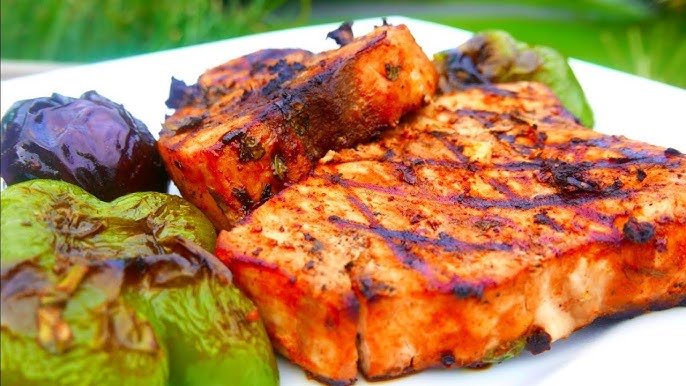Best Steak Recipe: Few dishes command as much respect on the dinner table as a well-cooked steak. Whether it’s a special occasion or just a craving for something hearty and delicious, steak has long held its title as a go-to comfort food. But getting that restaurant-quality result at home can feel a little intimidating, right? That sizzling crust, juicy pink center, and melt-in-your-mouth tenderness—how do they do it?
Well, the good news is, with the right steps, tools, and a little patience, anyone can master the art of cooking steak. This guide is all about breaking it down into easy, manageable steps. From selecting the right cut to plating it with the perfect sides, we’re walking you through the entire process.
We’re not just going to throw a quick recipe at you. Instead, this is a full-on steak experience. You’ll learn what works, what doesn’t, and how to adapt it to your tastes. Ready to turn your kitchen into a steakhouse? Let’s dive in.
Choosing the Right Cut of Steak
Choosing the right cut is arguably the most important part of the steak journey. It determines not just the flavor, but also the texture, cooking method, and even the price point.
Popular Cuts of Steak
Let’s go over the all-stars:
- Ribeye – The king of flavor. Known for its rich marbling (fat streaks), ribeye is juicy and full-bodied. Ideal for pan-searing or grilling.
- Sirloin – Leaner than ribeye, with a slightly firmer bite. It’s affordable and flavorful, though not as tender.
- T-Bone/Porterhouse – A two-for-one cut featuring both strip steak and tenderloin. Great for grilling.
- Filet Mignon – The most tender cut, with a buttery texture. Lacks the bold flavor of fattier cuts but perfect for those who prioritize tenderness.
Best Cut for Flavor vs. Tenderness
If you want bold, beefy flavor, go with ribeye or T-bone. If your goal is tenderness, filet mignon is your friend. For a balanced option that’s easy to find and relatively inexpensive, sirloin is a solid choice.
The cut you choose should match your cooking method and personal preference. Love a juicy, indulgent bite? Ribeye is your guy. Want something leaner? Sirloin fits the bill.
Preparing the Steak
Before you even think about turning on the stove or grill, prep work is key. This isn’t just about flavor—this step sets the tone for everything that follows.
Bringing Steak to Room Temperature
One of the most overlooked tips in steak cooking is bringing your meat to room temperature before cooking. Why? Because cooking cold steak straight from the fridge leads to uneven doneness. The outside may be seared beautifully while the inside remains cold and undercooked.
Let it sit out for about 30 to 45 minutes. This small step makes a world of difference in achieving that perfect pink center.
Seasoning: Simple but Effective
When it comes to seasoning steak, simplicity rules. All you really need is:
- Kosher salt
- Freshly cracked black pepper
Don’t overdo it with marinades or spice blends that mask the meat’s natural flavor. A generous seasoning of salt and pepper enhances the steak and helps create that crave-worthy crust when seared.
For an optional flavor boost, you can also add:
- Garlic powder
- A touch of smoked paprika
- A light brush of olive oil
Just remember: the steak is the star. Treat it like one.
Cooking Methods
There’s no one-size-fits-all way to cook a steak. Your kitchen setup, tools, and taste preferences will play a big role in which method works best for you.
Pan-Searing on the Stove
This is the go-to method for many home cooks—and for good reason. Pan-searing gives you that restaurant-style crust and is perfect for thinner cuts.
All you need is:
- A heavy skillet (preferably cast iron)
- High-heat oil (canola, avocado, or grapeseed)
- Butter, garlic, and herbs (for basting)
You’ll sear the steak over high heat for 2-3 minutes per side, then add butter and aromatics and baste it until cooked to your desired doneness.
Grilling for a Smoky Flavor
Grilling offers that signature smoky, charred flavor that screams summer BBQ. It’s ideal for thicker cuts like ribeye or T-bone.
Make sure to preheat the grill properly and oil the grates to prevent sticking. Use direct heat for the sear, then move to indirect heat to finish cooking.
Oven Finish for Thickness
For thick steaks (1.5 inches or more), start with a pan-sear, then transfer the steak to a preheated oven (around 400°F) to finish. This two-step method gives you the best of both worlds: a crusty exterior and a juicy, evenly cooked interior.
Step-by-Step Cooking Process
Let’s bring it all together now. Here’s your foolproof game plan to make the best steak of your life.
Tools You’ll Need
- Cast iron or heavy-duty pan
- Tongs
- Meat thermometer
- Basting spoon
- Aluminum foil (for resting)
Detailed Instructions for Medium-Rare Steak
- Bring steak to room temperature – Let it sit out for 30-45 minutes.
- Season generously – Use kosher salt and black pepper on both sides.
- Preheat your skillet – High heat until the pan is smoking hot.
- Add oil – A tablespoon of high-heat oil.
- Sear the steak – 2-3 minutes on each side without moving it.
- Add butter and aromatics – A couple of tablespoons of butter, garlic cloves, and herbs like thyme or rosemary.
- Baste, baste, baste – Tilt the pan and spoon the melted butter over the steak.
- Check the temp – For medium-rare, aim for 130°F (it will rise slightly as it rests).
- Let it rest – Tent with foil and let it sit for 10 minutes before slicing.
Resting and Slicing the Steak
Let’s talk about the moment of truth—the resting and slicing. You might be tempted to dive in as soon as the steak comes off the heat, but patience here makes all the difference between a juicy masterpiece and a dry disappointment.
Why Resting is Crucial
When you cook steak, the juices move toward the center. If you cut it immediately, all that flavor spills out onto your cutting board instead of staying locked inside the meat. Resting allows those juices to redistribute evenly.
How long should you rest it? At least 10 minutes for a standard 1-inch steak. For thicker cuts, 15-20 minutes won’t hurt. Cover it loosely with foil—not tightly—so the heat doesn’t create steam and ruin the crust.
How to Slice for Tenderness
There’s one golden rule when slicing steak: cut against the grain. The grain refers to the direction of the muscle fibers. Cutting across those fibers shortens them, making the steak easier to chew.
Use a sharp carving knife and slice thinly, especially for cuts like flank or skirt steak. If you’re serving multiple people, slice the entire steak and fan out the pieces on a warm platter—it not only looks amazing but keeps everyone from sawing at their own slices.
This final touch is often skipped, but it really separates a good steak from a great one.
Perfect Side Dishes for Steak
No steak is complete without its supporting cast. The right side dishes can enhance the experience, providing contrast, texture, and complementary flavors.
Classic Mashed Potatoes
A timeless favorite. Creamy mashed potatoes offer a soft, buttery counterpoint to the steak’s rich, meaty flavor.
Ingredients:
- Russet potatoes
- Butter
- Heavy cream or milk
- Garlic (optional)
Quick tip: Boil the potatoes until fork-tender, then mash with warm butter and cream. Season generously with salt and pepper. Add roasted garlic or chives for a gourmet touch.
Grilled Vegetables
Veggies on the grill are fast, flavorful, and balance out the richness of the steak. Try:
- Asparagus
- Zucchini
- Bell peppers
- Mushrooms
Toss them in olive oil, sprinkle with salt and pepper, and grill until nicely charred. A squeeze of lemon juice or a drizzle of balsamic vinegar can take them over the top.
Garlic Butter Mushrooms
Want to double down on umami? Mushrooms are your best friend. Sauté them in butter with minced garlic, a splash of Worcestershire sauce, and some thyme. Let them cook until deeply browned and glazed.
Serve them on top of the steak or on the side—either way, you’re winning.
Steak Sauces to Elevate Your Meal
While a perfectly cooked steak is fantastic on its own, a great sauce can elevate it to gourmet status.
Homemade Peppercorn Sauce
This creamy, peppery sauce is a steakhouse classic.
Ingredients:
- Crushed black peppercorns
- Brandy or cognac
- Heavy cream
- Beef broth
Deglaze your pan with brandy, scrape up the flavorful bits, then add cream and simmer until thick. Pour over your steak and feel like a chef.
Red Wine Reduction
Bold, slightly tangy, and ultra rich, this sauce adds depth to every bite.
To make:
- Sauté shallots in butter
- Add red wine and beef stock
- Simmer until reduced by half
- Strain and finish with a knob of butter
Use a dry red wine like Cabernet or Merlot for best results.
Chimichurri for a Fresh Twist
From Argentina with love, this herbaceous, zesty sauce is perfect for grilled steaks.
Ingredients:
- Parsley
- Garlic
- Olive oil
- Red wine vinegar
- Oregano
- Red pepper flakes
Blend everything roughly and spoon it over your steak. It’s tangy, garlicky, and cuts through the richness beautifully.
Pro Tips for the Best Steak Every Time
Even seasoned cooks mess up a steak sometimes. But knowing what to look out for can save your meal.
Common Mistakes to Avoid
- Not resting the steak – You already know why this is a bad idea.
- Cooking cold steak – Leads to uneven cooking.
- Using too little seasoning – Salt is your friend here.
- Poking or flipping too often – Let it sear without interference.
- Overcrowding the pan – Sear one steak at a time for the best crust.
Thermometer Tips for Doneness
Use an instant-read thermometer to take the guesswork out:
- Rare: 120-125°F
- Medium Rare: 130-135°F
- Medium: 140-145°F
- Medium Well: 150-155°F
- Well Done: 160°F and up
Always check the temp at the thickest part, and remember: the temp will rise a few degrees as the steak rests.
FAQs about Best Steak Recipe
Q1: What is the best cut of steak for grilling?
The best cuts for grilling include ribeye, New York strip, T-bone, and filet mignon. These cuts are tender, juicy, and flavorful when cooked properly.
Q2: How do I cook steak to medium-rare?
Cook the steak over high heat for about 3–4 minutes on each side, depending on thickness. Use a meat thermometer — medium-rare is 130–135°F (54–57°C).
Q3: Should I marinate steak before cooking?
Marinating isn’t necessary for premium cuts like ribeye or strip steak. However, tougher cuts like flank or skirt steak benefit from a marinade to enhance tenderness and flavor.
Q4: Do I need to let the steak rest after cooking?
Yes, always let the steak rest for 5–10 minutes. This allows the juices to redistribute, ensuring a juicy, flavorful bite.
Q5: Can I cook steak in a pan instead of on the grill?
Absolutely! A cast-iron skillet or heavy pan works great. Sear the steak on high heat and finish in the oven if needed for thicker cuts.
Q6: How can I tell if the steak is done without a thermometer?
Use the finger test — compare the firmness of the steak to different parts of your hand. It’s not exact, but a useful trick in a pinch.
Q7: What seasonings work best on steak?
Simple is best — coarse salt, freshly ground black pepper, garlic powder, and a touch of olive oil or butter create a classic, savory flavor.
Conclusion
Cooking steak at home doesn’t need to be intimidating. With the right cut, a solid technique, and a little patience, you can create a steakhouse-level dish in your own kitchen. From the sizzle of the sear to that first juicy bite, making steak is more than just a recipe—it’s an experience.
So, grab your favorite cut, season it boldly, and enjoy the process. Whether you’re cooking for yourself or impressing guests, this steak recipe is a guaranteed win.



